Luxman R1500 Handleiding
Bekijk gratis de handleiding van Luxman R1500 (11 pagina’s), behorend tot de categorie Receiver. Deze gids werd als nuttig beoordeeld door 341 mensen en kreeg gemiddeld 4.7 sterren uit 171 reviews. Heb je een vraag over Luxman R1500 of wil je andere gebruikers van dit product iets vragen? Stel een vraag
Pagina 1/11

AM/FM STEREO RECEIVER model R1500 OPERATION MANUAL

You are about to begin a new high f idelity experience. The
LUXMAN R-1500 Receiver is unique in the annals of high
fidelity equipment. Though built with extremely sophisti-
cated engineering, its concept is quite simple: to produce a
receiver with performance comparable to that available in
the f inest separate tuners, preamplif iers and amplif iers.
After extensive research,the R-1500 was designed without
compromise to provide high output. low distortion and an
exceptionally wide range of available power. ln addition,
this unit reflects great attention to control flexibility and
human engineering.
The R-1500 represents the finest standards of design and
craftsmanship, but the proof is in the handling... and in
the hearing. As you proceed to connect the receiver. may
we suggest you read all the ¡nstruct¡ons carefully before
turning the unit on? A few moments invested now can
eliminate doubts or delays later.
lf you have any questions, please do not hesitate to consult
your dealer, or distributor in your territory.
Pleasurable listening!
NAMË AND USAGE OF EACH CONTROL
1. INPUT SELECTOR SWITCH
This switch permits proper selectìon of desired progranìme
sources. You may set either of the positions (Aux-1 , Aux-2,
Phono-.1 , Phono-2, FN/, AN/l)
2. AM/FM DÍAL
Turn tìre tuning knob according to the f requencies marked
on this dial and the desired signal can be received. Receiva-
ble frequency range for FIV js from SBMHz to 108MHz,
while for AfV from 525Kl¿ to 1605KH2. When a stereo
FIV is being received the "stereo" beacon is illuminated
3. SIGNAL STRENGTH METER
The accurate tuning point can be obtained when the
needle of this meter shows its maximurn swing The move-
ment of the needle depends on the strength of the receiving
signal Even if the needle swings to the extreme right it
does not irnpair the meter. But for perfect reproduction of
stereo FlVl, it is recommended to have the needle's swing
exceeding "4" on this meter.
ln case of FI\4 reception such signals as cannot be cut off
when the muting switch(14) is at the "on" position are
used as stereo reception.
MICROPHONË LEVEL CONIROL
(PULL ON MIC IEVËL)
4. FM FINE TUNING METER
When no FM signal is received this pointer rests in the
vicinity of the centre position. When the tuning knob( 5 )
ìs turned and the needle of fine tuning meter(4) begins
to swing, the needle of this meter comes out of the centre,
and as the accurate tuning point is getting very near the
needle cornes back again closer to the centre. Thus the
accurate tuning point can be obtained with the needle at
lhe dead centre position This meter is exclusively effective
on FN/1, and in case of AM reception the needle does not
move from iLs cenLre poinL.
5. TUNING KNOB (TUNING}
Use this knob for tuning on station. When any desired
signal is received make accurate tuning slowly so that the
pointer of signal strength meter( 3 ) shows its maxirnum
swing and that for f ine tuning meter( 4 ) comes to íts
centre position. For AM reception this centre tun¡ng meter
does not operate.
6. STEREO BEACON
When selector switch(1 ) is set to "FM" position this
stereo beacon lights up in case the FN/ stereo signal is
receiving, while it does not light up for the mono signal.
Further when monaural FM on reception changes into
14 l!1Ul lNc SWITCH (MUllNG) 25 MAINS SWITCII (POWEB)
3 SIGNAL SIRËNGTI] METER Iru srEREo
I
I
G MËIER
5 IUNING KNO¡] (fUNING)
DIAL
LOW CUT FILTËR
22 FIIGIJ CUT FILTER
ON LY S\,^/ITCH
-
6 STFRFÔ AEACON
4 FM FINE TUNIN
ì
13
9 MODÊ SELECTOB SWIICH
AM/I-M
21
L zs SpEAKER sELEcroR swllcH (sPEAKEllsl r
TREBLEI
L,,, TREELE LEVEL coNTRoL
l-r rNPUf sELEcroR swrrctl
B MICRCJPFIONE JA(]K iMIC Iì L CHANNEL)
20 TRAÊJEL FBEOUÉNCY SELECTOR SWITCH
ßASS IJREOUENCY SELECTOB SWITCH
17 BASS LEVEL CONTROL (ßASS)
-1G LTNEAR EOUALTZÊR 24 HEADPHONE JACK (STEßEO PHONE)
| *,--*-' | -.;;r-' Jì&EFqa*l".+*r'-1+À ruÌ.'",ílN4*¡*,¡q+e,
-scts--ë4e-..----E{¡e-. .. '|.-zgç-..-.-egç..-"....jegç ... ,aPe-,-:48p. ......-É44..-"
(} -"*-*
'
') l)
ot\c

7
stereo this beacon lights up automatically to indicate
stereo recept¡on. On the contrally if reception changes
from stereo to mono, the beacon does not light. In
case rnono reproducÌion of stereo signal is desired, set
the mode selector switch (9) to mono position.
MICROPHONE LEVEL CONTROL (PULL ON MIC.
LEVEL}
The input level of the microphone jack(8 ) is controlled by
this knob Normally this switch should be left pressed in.
Pull the knob outwards and the crrcuit is put into opera-
tion. Then turn it clockwise so that an appropriate level
can be obtained A word of warning: do not turn the main
amplifier volume up too loud as annoying feedback "howl"
might take place between your speakers and microphone.
Experimenting will help you find the best levels for each of
these controls.
8. MICROPHONE JACK (MIC. R. L. CHANNEL)
lnput sensitiv¡ty 2mV; input lmpedance 50 Kohms.
Both L-channel and R-channel have ìts own standardized
jacks, and STEREO SOUND N4 lXlNG of mic input with
other programme sources is possible when two rnicrophones
(stereo) are plugged in These jacks accept the microphone
of 600 ohms (low impedance) or 50 Kohms (high im-
pedance) type and the rnput is amplif ied and controlled by
the |evel control volume( 7 ) so that it can be mixed to
both channels respectivelY
9. MODE SELECTOR SWITCH
This switch allows seleclion of sound reproduction modes
such as Stereophonic, Monaural and Stereo-reverse For
f rrrther details refer to the "Mode Selection"
10. TAPE DUBBING SWITCH
The dubbing lever switch has three positions: in the centre
position "source", which is the programme source as
selected by the f unction selector. When moved to the "up"
position(1 to 2) it will allow the output of tape recorder
"1" to go to the input of tape recorder "2" for dubbing
(reprint). Beprint from tape recorder "2" Iorape recorder
"1" is allor¡¡ed when moved to the "down" position
(2to1).
11. TAPE MONITOR SWITCH
When this switch ¡s lifted up to the "deck-1 (4 CH)"
position playback from "TAPE IVIONlIOR-1" is possible,
while at the "2" position "TAPE N/ìONITOR 2" is repro-
duced The tape connector(32) is also f unctionable when
the switch is set at the ".1 " position, i.e,, it f unctions ìn
parallel wìth "TAPE MONITOR 1". In case of 3-head tape-
recorder whìch has playback head for playback in the
course of recording, simultaneous plavback monitoring is
then possible while recording. ln this case this receiver
receives the playback signals f rom either of TAPE
IVIONIIOR-1 , TAPE IVIONITOR 2, or tape connector while
feeding Ìhe recording signals to REC. OUT 1, REC. OUI 2
and tape connector. Remember that this switch must be
set at the corresponding position to which the tape recorder
is connected.
Caution: lf this switch is at the "source" position no
playback possible from tape recorder.
12. VOLUME CONTROL (VOLUME}
A clockwise turn of this control increases volume, while a
counter-clockwise turn decreases and finally cuts out
volume. Thìs knob is of dual concentric construction and
permits separate control of either the r¡ght or left channels;
the outer axis is for the right channel, and the inner axis rs
for lhe left channel. This control usually controls both
channels simultaneously, but you may adjust either channel
by holding one axis while turning the other The click-
sÌoppers are only for the outer axis, i.e., the right channel
13. LOUDNESS SWITCH
Because loudspeakers and ears generally respond less to
extreme high and low (treble and bass) frequencies as
volume levels are reduced, the LOUDNESS switch is
included to boost these frequerrcies and thereby provide
tonal compensation. Whether or not you use th¡s switch
depends upon the levels at which you generally listen, the
kind of speakers you have, the room acoustics and a
number of other variables. Experimantation is the best
guide to using the LOUDNESS switch
14. MUTING SWITCH (MUTING)
Interstation noise which is possible when the tuning point
is drifted can be eliminated by this swìtch in FN/ reception
Use this to cut off ¡nterstation noise or other impractically
weak radio signals. Broadcasts which can be received at the
muting on position are practical for stereo reception. lt is
recommended to keep th¡s switch always "on" except when
a weak siqnals is received
lf tuning of stereo broadcasts only is desired, push this
switch "on" otherwise leave it normally "off" f or reception
of both Stereo and Monaural FIV broadcasts. Also when
this switch is at the "on" pos¡tion, weak signals are com
pletely eliminated
16. LINEAR EOUALIZER
This is a new tone control which provides a tonal
compensation specifically intended for subtly augment¡ng
regular tone controls. w¡th the control in its mid-position,
flat frequency response is achieved. When switched to
either of 2 "up tilt" positìons, the entire response curve ìs
rotated so as to linearly increase treble response while
simultaneously decreasing bass response. Conversely, selec-
lion of a "down tilt" position rotate the response curve in
a clockwise direction and provides a gradual decrease of
treble and a simultaneous increase of bass. This equalizer is
not released even when the Tone Controls Switch is
set at the "tone defeat" positìon. For further details,
refer to the Operation of Linear Equalizer (Page 13).
17. BASS LEVEL CONTROL (BASS)
A clockwise turn of the control boosts the bass response,
and a counter-clockwise turn decreases and cuts the bass.
This control has a click stopper with 11 poìnts. lt yields a
flat frequencV response when set at the centre of the rota
tion angle. You can choose a turnover (roll-off) frequency
of 150H2 or 300H2 with the Selector Switch(18) The Bass
Level Control is of dual concentric construction and
permits separate control of either the right or lefÌ channels:
the outer axis is for the right channel, and the inner axis is
for the left channel. This control usually controls both
channels simultaneously, but you may adjust either channel
bv holdinq one axis whìle turning the other The click-
stoppers are only for the outer axis, i.e., the right channel.
18. BASS FREOUENCY SELECTOR SWITCH
Bass turn-over (roll-off) frequencies can be selected with
this swìtch. When the desired frequency (150H2 or 300H2)
is set by thìs switch, tone control starts to function at
the selected frequency. At the FLAT position, a flat
frequency response is obtained, regardless of the position of
the Bass Level Control(17).
19. TREBLE LEVEL CONTROL (TREBLE)
A clockwise turn of this knob boosts the treble response,
while a counter-clockwise turn decreases the treble This
control is of the same construct¡on as that of the Bass Level
Control, and ìts operation corresponds to that described in
(11 )
20. TREBLE FREOUENCY SELECTOR SWITCH
Function-wise, it is the same as the Bass Frequency Switch
described in (18) Treble turn-over (roll-off) frequencies
can be selected at 3KHz or 6KHz.
21. LOW CUT FILTER
With this switch low frequency range can be cut off at
the rate of 12 dBloct Reduction at th¡s rate can be made
below 70H2. See the f urther details in the "Operation of
Low Cut Filter"
22. HIGH CUT FILTER
Setting of this switch reduces the amount of high frequen-
cies above I KNz ar the rate of 1 2 dB/oct See the further
details in the "Operation of Treble Cut Filter"
23. SPEAKER SELECTOR SWITCH (SPEAKERS}
Thìs receiver offers convenient use of 3 pairs of speaker
systems You can choose independent or simultaneous
driving of 1 or 2 systems among 3 pairs as per the
indication on the panel. When the knob is set at the "B"
posìtion B speaker terminals(29) start to function, and like-
wise at the "A + B" position both A and B speaker
termìnals(29 ) si muitaneously operate.
24. HEADPHONE JACK (STEREO PHONE}
Connection of stereophonic headphone to this jack allows
pr¡vate listening. Output signals are always available irre-
spective of the position of speaker selector switch(23) For
use of stereophonic headphone, however, it is recom-
mended to set the speaker switch at the "off" position
25. MAINS SWITCH (POWER)
Repetition of pressing this knob ensures alternate switch-on
and off.
26. MAINS CORD
For operation of this rece¡ver the mains plug attached to
this cord should be connected to the mains power supply
so u rce.
27. I\4AINS FUSE (U-TYPE AND E-TYPE)
2
15. STEREO ONLY SWITCH ln the mains power circuit is inserted 5A(U-TYPE) 'or
J
Product specificaties
| Merk: | Luxman |
| Categorie: | Receiver |
| Model: | R1500 |
Heb je hulp nodig?
Als je hulp nodig hebt met Luxman R1500 stel dan hieronder een vraag en andere gebruikers zullen je antwoorden
Handleiding Receiver Luxman

13 November 2024

13 November 2024

13 November 2024
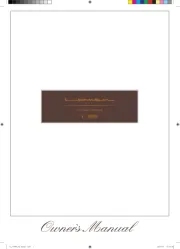
13 November 2024

13 November 2024

13 November 2024

13 November 2024

13 November 2024

13 November 2024

13 November 2024
Handleiding Receiver
- Lumantek
- Avalon
- McIntosh
- Audizio
- KanexPro
- HQ
- Monacor
- Viscount
- Ibanez
- PS Audio
- DAP Audio
- Lectrosonics
- NUX
- Skytec
- Atlas Learn
Nieuwste handleidingen voor Receiver
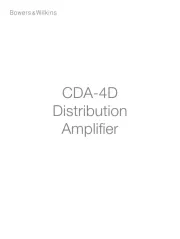
16 September 2025
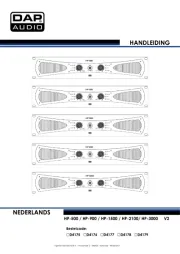
16 September 2025

16 September 2025
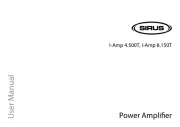
10 September 2025

8 September 2025

8 September 2025

8 September 2025
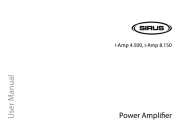
8 September 2025

8 September 2025
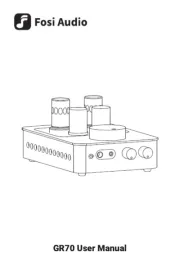
2 September 2025